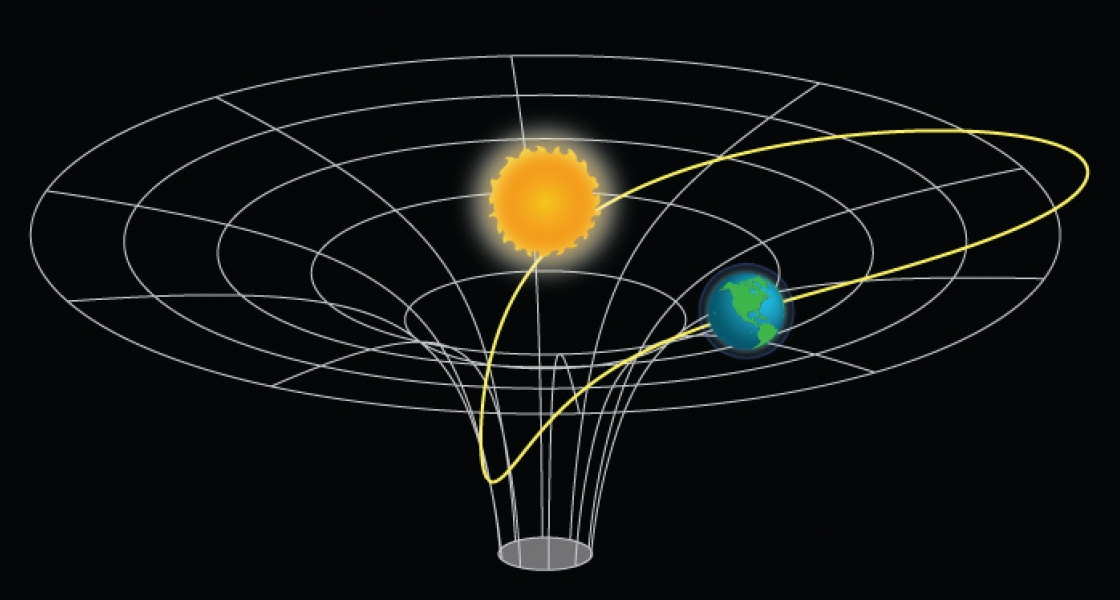What sort of experiment could detect the effects of quantum gravity, if it exists? Theories that go beyond the Standard Model of physics include a concept that links quantum interactions with gravity. Physicists would very much like to find evidence of this coupling as these two branches of physics are not yet unified in a single theory that explains everything about our world.
Many physicists believe it would be very difficult to detect connections between quantum mechanics and gravity without using a next-generation supercollider. The difficulty stems from the fact that quantum effects typically come into play between atomic and subatomic particles in close proximity, and, classically, gravitational forces result from a large-scale curvature in the space-time continuum.
Victor Flambaum, a theoretical physicist from Australia’s University of New South Wales, has pointed out that one could use the exquisite precision of modern atomic clocks to look for evidence of quantum gravity. He suggested comparing different atomic clocks to see whether the ratio of their clock transition frequencies depends on Earth’s distance from the Sun. This distance varies because Earth travels around the Sun in an elliptical orbit. The gravitational potential on Earth varies by 3.3% during a year.
If coupling between quantum effects and gravity exists, it might manifest as sidereal variations in atomic-clock transition-frequency ratios; high-precision clock comparisons would either reveal this coupling or place a limit on its strength. Plus, a long-term record of the ratio of different clock frequencies could provide evidence that fundamental constants may, in fact, be inconstant, albeit at very tiny levels detectable only with extremely precise measurements. Boulder was the right place to test Flaumbaum’s idea.
In early 2007, Tara Fortier, Jason Stalnaker, and their colleagues at NIST reported measurements over a six-year period comparing the frequency ratio of the optical clock transition of a single mercury ion with the microwave transition in 133Cs (cesium) used to define the second. No variations in the fundamental constants related to Earth’s position in its orbit were detected. Likewise, no variation of the frequency ratio with time was evident, allowing them to constrain any change of the fine structure constant to less than 1.3 x 10-16/yr. In a similar analysis, Neil Ashby and his NIST colleagues also found no evidence of a yearly variation.
In 2007, Fellow Jun Ye’s group was also planning comparisons of its strontium (Sr) lattice atomic clock with NIST’s Cs fountain time standard and an optical atomic clock based on calcium (Ca). Graduate student Sebastian Blatt took on the project of analyzing data from the earlier NIST studies and the Sr vs Ca clock comparison to look for any coupling of gravity with three fundamental constants: the fine structure constant, α; the electron-proton mass ratio, µ; and the light quark mass. The Ye group enlisted the help of NIST colleagues to measure the frequency of the Sr optical clock. Colleagues in France and Japan provided independent measurements of a Sr optical clock frequency.
Meanwhile, Jim Bergquist, Till Rosenband, and their colleagues at NIST were also gearing up to compare two different NIST optical atomic clocks based on single ions of mercury (Hg+) and aluminum (Al+). They also decided to mine their data for evidence of coupling between the fine structure constant, α, and gravity.
Blatt and his colleagues in JILA, France, and Japan found no evidence for coupling between gravity and α, µ, or the light quark mass. The NIST researchers found no indication of coupling between α and gravity. If coupling exists, it is still too small to detect with today’s accurate and precise optical atomic clocks.
These clock experiments have set new, much lower limits on the strength of coupling between quantum and gravitational effects. Improvements in atomic clock performance may place even tighter limits on this coupling. Tighter limits, in turn, will place more stringent constraints on advanced theories. - Julie Phillips




